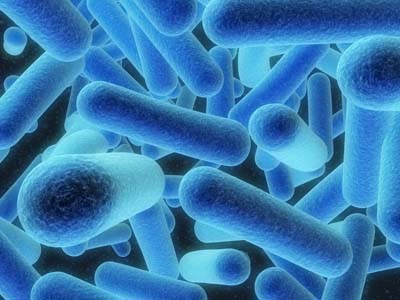Want to Be Healthy? Manage Your Microbes Like a Wildlife Park
Our bodies are slurries of living microbial organisms, without which we’d be rendered ill or worse. Science is only now on the cusp of unraveling the roles that only a handful of our 100 trillion microbes play to keep our bodily systems running smoothly.
Carl Zimmer explains the emerging field of medical ecology in the Times:
“I would like to lose the language of warfare,” said Julie Segre, a senior investigator at the National Human Genome Research Institute. “It does a disservice to all the bacteria that have co-evolved with us and are maintaining the health of our bodies.”
This new approach to health is known as medical ecology. Rather than conducting indiscriminate slaughter, Dr. Segre and like-minded scientists want to be microbial wildlife managers.
So how, exactly, do these unseen bugs shape our lives? Let’s start from the beginning: birth. Commenting on a study published in PLoS One that investigated how the vaginal microbiome changes throughout pregnancy, Zimmer writes:
Early in the first trimester of pregnancy, she found, the diversity of vaginal bacteria changes significantly. Abundant species become rare, and vice versa.
One of the dominant species in the vagina of a pregnant woman, it turns out, is Lactobacillus johnsonii. It is usually found in the gut, where it produces enzymes that digest milk. It’s an odd species to find proliferating in the vagina, to say the least. Dr. Aagaard-Tillery speculates that changing conditions in the vagina encourage the bacteria to grow. During delivery, a baby will be coated by Lactobacillus johnsonii and ingest some of it. Dr. Aagaard-Tillery suggests that this inoculation prepares the infant to digest breast milk.
A healthy baby arriving in the world coated in bacteria is only beginning its microbial journey. Breast milk further paves the way for a healthy inner ecosystem, providing up to 600 species of bacteria.
Once a kid grows a bit and can stand on his own two feet, he should spend as much time as possible playing outside . Tying back to the ecology theme, researchers in Finland recently found that being outside significantly increases kids’ microbe load coating their skin, and also their resistance to allergies. More and more, we’re recognizing how important exposure to natural dirt and germs may be for our immune system and other bodily functions.
By the time we reach adulthood, each of us should carry around 2 to 5 pounds of bacteria. The intestines in particular plays host to this party, Gina Kolata writes in the Times.
“The gut is not jam-packed with food; it is jam-packed with microbes,” Dr. Proctor said. “Half of your stool is not leftover food. It is microbial biomass.” But bacteria multiply so quickly that they replenish their numbers as fast as they are excreted.
When this system goes awry – from too many antibiotics, for example – research suggests that a whole host of problems can pop up, from irritable bowel syndrome, allergies, asthma and even obesity. Quick fixes like fecal transplants, in which someone’s else’s microbe-teeming stool is inserted into your own off-kilter colon, have shown promising results though other researchers have warned that more studies are needed before we all go swapping feces.
Figuring out the ins and outs of this intricate ecosystem will no doubt take time. Just as the complexities governing a forest or lake are still only partially understood, scientists suspect that unraveling and manipulating the ecological health of the human microbiome will likely prove just as tricky.
More from Smithsonian.com: Bacterial Evidence on Our Keyboards, Alexander Fleming’s Germ Art
/https://tf-cmsv2-smithsonianmag-media.s3.amazonaws.com/accounts/headshot/Rachel-Nuwer-240.jpg)

/https://tf-cmsv2-smithsonianmag-media.s3.amazonaws.com/accounts/headshot/Rachel-Nuwer-240.jpg)